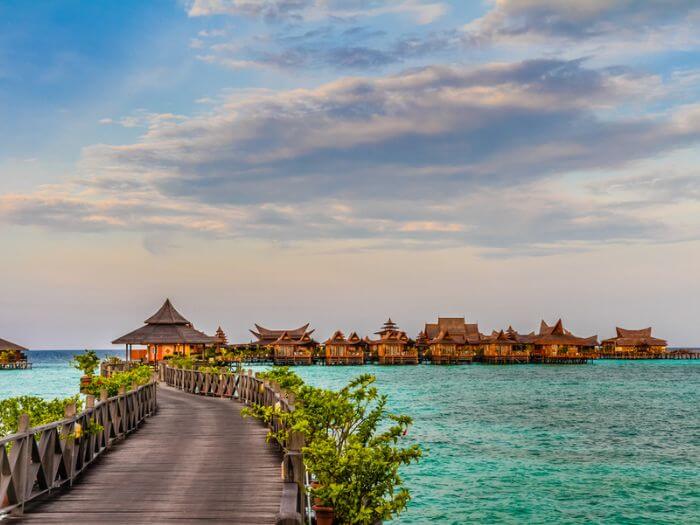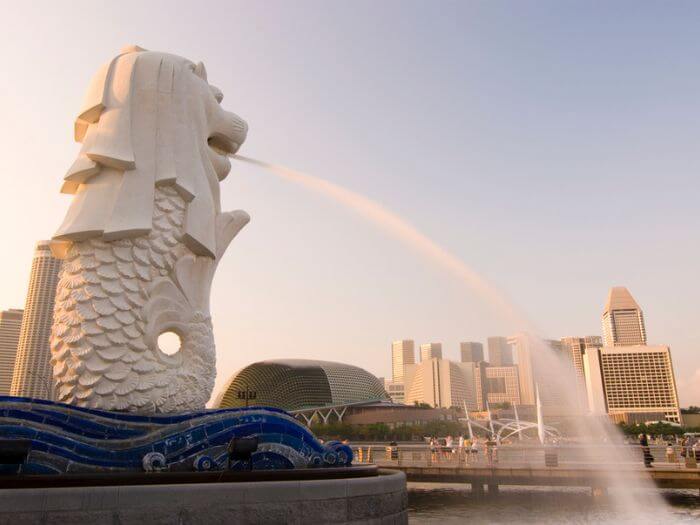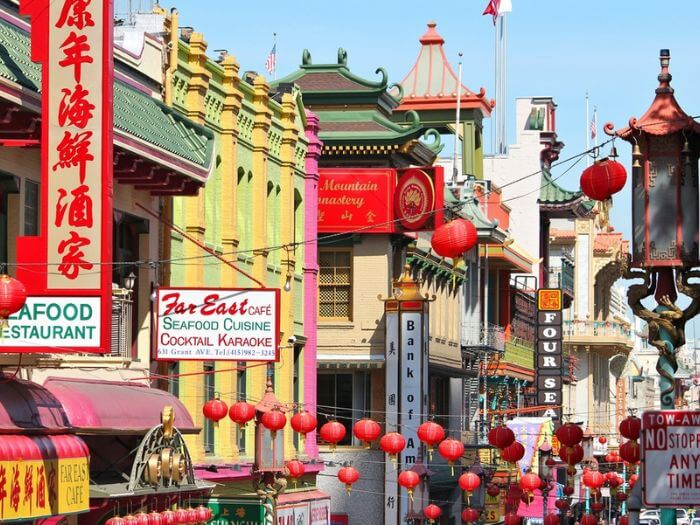If you're learning Chinese then you might be curious about Chinese speaking countries around the world.
Chinatowns are a familiar sight in many places, and lots of countries have significant populations of Chinese speakers. But which versions of Chinese are spoken? And how long have overseas Chinese communities existed?
In this post, I’ll answer these questions and more as I discuss the major Chinese-speaking countries around the world.
Pro Tip
By the way, if you want to learn Chinese fast and have fun, my top recommendation is Chinese Uncovered which teaches you through StoryLearning®.
With Chinese Uncovered you’ll use my unique StoryLearning® method to learn Chinese through story…not rules. It’s as fun as it is effective. If you’re ready to get started, click here for a 7-day FREE trial.
Table of Contents
Chinese Speaking Countries In Greater China
1. Mainland China And Mandarin Chinese

When listing Chinese speaking countries, we have to start with Mainland China, the place where the language was born. But “Chinese” can have different meanings.
Without qualification, “Chinese” is commonly used casually to mean the standardised form based on the Beijing dialect. In English, it’s often referred to as “Mandarin”, but the Chinese themselves call it 普通话 pŭtōnghuà, meaning “common language”.
Within China, the government discourages the use of local forms of Chinese in favour of Putonghua – even to the extent that you will sometimes see signs on buses telling passengers to “please use Putonghua” to speak to each other in public.
Chinese Dialects
However, Putonghua is just one dialect of Mandarin, and several other quite different Chinese dialects, collectively known as 官话 guānhuà (language of the officials), are spoken throughout large swathes of the country.
Mandarin – or Guanhua – originally appeared in the north of China. But the distribution of its various dialects now covers an arc that stretches from Heilongjiang province in the north out to Sichuan province in the west and down into Yunnan province in the south.
Some dialects, for example Lower Yangtze Mandarin and Sichuanese, are not mutually intelligible with Putonghua. But when all the dialects are counted together, with over 900 million native speakers, Mandarin is considered the world’s most common first language.
Yet although it's the most widely spoken, Mandarin is still just one version of Chinese, and there are around nine others (depending on how you define them) that are even more different.
Other Chinese Languages
After Mandarin, with over 81 million native speakers, the next most spoken Chinese variant is Wu Chinese, a group that includes Shanghainese.
Then, with around 73 million native speakers, comes Yue Chinese – which includes Cantonese. And the third-largest is Southern Min, a language group centred on Fujian province that includes Hokkien and Teochew. Southern Min has around 50 million native speakers.
Several others with tens of millions of native speakers each also exist. And all these variations of Chinese are descended from a common ancestor known as Old Chinese. See my post on Chinese language history for more on that.
For Chinese people, these variants are thought of as simply being different versions of the same language, “Chinese” – which they call 汉语 hànyŭ (Han language) or 中文 zhōngwén (China language).
However, scholars from elsewhere usually regard them as separate languages since they are mutually unintelligible – just as French, Spanish and Italian are considered different languages despite having all developed from Latin.
When you talk about Chinese speaking countries, you need to understand that “Chinese” doesn’t just refer to one language but rather a patchwork of related but different languages and dialects.
This is important because the Chinese languages spoken around the world are almost as diverse as those found in China. So now let’s move on to looking at which other countries and territories around the world speak versions of Chinese.
2&3. Hong Kong And Macao

Hong Kong and Macau were for several centuries colonial possessions of Britain and Portugal respectively, and linguistically, their development has been broadly similar.
Since both lie off the coast of Guangzhou province where Cantonese is the predominant language, the populations of Hong Kong and Macau were mainly Cantonese speakers. And traditionally, not many people spoke Mandarin.
When the simplification of the Chinese writing system occurred in the 1950s, both territories were still under colonial rule. For this reason, both continued to use traditional Chinese characters when the mainland switched to simplified. And they still do today.
The populations of Hong Kong and Macau still consist mostly of Cantonese speakers, with the variety spoken in each showing slight variations, in part due to influences from the former colonial rulers.
With the influx of immigrants from the mainland that has occurred in recent years, the proportion of Mandarin speakers in both Hong Kong and Macau is increasing. However, in Hong Kong at least, English is still likely to get you just as far as Mandarin.
4. Taiwan

Taiwan is an island located off the coast of China’s Fujian province where the East and South China Seas meet.
China considers it a breakaway province that must eventually be reunited with the mainland. But most Taiwanese consider it an independent, democratic country.
During the Chinese Civil War, the Republic of China under the Kuomintang was defeated by the Communist Party of China. As a result, the Kuomintang fled the mainland for Taiwan, and the island has styled itself the Republic of China ever since.
The linguistic situation in Taiwan is complex, as you'll discover in my post – what language is spoken in Taiwan? But Taiwanese Mandarin is used for business and education and also functions as the de facto official language.
It varies slightly in pronunciation and vocabulary from mainland Putonghua, but the two are practically 100% mutually intelligible. If you travel to Taiwan and speak Mandarin, you will be understood everywhere you go – although many people speak English there too.
Due to its proximity to China’s Fujian province, a large proportion of the population belongs to the Hoklo Chinese ethnicity, the speakers of Hokkien. As a result, Hokkien is also widely spoken on the island.
Hakka, another major Chinese language from Fujian and the surrounding provinces, is also commonly heard. And completely unrelated indigenous languages belonging to the Austronesian language family are also present.
Like Hong Kong and Macau, Taiwan still uses traditional characters. And Classical Chinese, not easily understood by the general population, is still sometimes used for ceremonial occasions and religious rites as well as for the Taiwanese national anthem.
Chinese Speaking Countries In Southeast Asia
Given that China is such a huge and populous country, it is unsurprising that its influence is strongly felt in the surrounding region, especially since the Chinese have traditionally been heavily involved with seafaring, commerce and trading.
Over the centuries, many Chinese have migrated to most parts of Southeast Asia. And there are many areas where versions of Chinese are commonly heard today. Here are some of the most important Chinese speaking countries in this part of the world.
5. Thailand

Outside of Greater China (the mainland plus Hong Kong, Macau and Taiwan), Thailand is the country with the largest Chinese population in the world.
However, although up to 10 million Thais are of Chinese descent, comprising perhaps as much as 10-15% of the population, they are now so well integrated that most of them only speak Thai.
About half of Thailand’s Chinese community originally came from a part of Guangdong province where the Southern Min dialect Teochew is spoken. Several loanwords in Thai are derived from Teochew and certain Thai dishes were also adapted from Teochew cuisine.
Other dialects represented include Hakka, Hokkien, Hainanese and Cantonese. But young Thais nowadays are far more likely to concentrate on learning Mandarin.
If you visit Bangkok, head to the city’s vibrant Chinatown centred on Yaowarat Road where you’ll be surrounded by signs in Chinese and no shortage of places to eat fantastic Chinese food.
However, even there, you’re much more likely to hear people speaking Thai than any Chinese dialects.
6. Malaysia

Chinese traders and merchants have been travelling to what is now Malaysia since the days of Kublai Khan in the 13th century, and many of them chose to stay. But the main Chinese migration to the region was during the period of British colonial control.
At this time, many Chinese, especially from the poorer southern provinces, migrated to British Malaya and Borneo in search of agricultural or industrial work.
It's thought that as many as five million Chinese made their way to what is now Malaysia by the 19th century. And their southern origins explain the mix of languages now spoken in the country.
Nowadays, Chinese make up almost a quarter of the population of Malaysia, giving Malaysia the second-largest overseas Chinese community in the world after Thailand.
However, Malaysia is very different to Thailand. The population consists of the majority Malay people along with ethnic Chinese and Indians mostly of Tamil descent. Various Dayak (native) groups are also found in the two Bornean states.
The different communities tend to keep their own customs and languages, using Malay or English when talking to speakers of other languages.
Many varieties of Chinese can be heard in Malaysia, depending on where you are. For example, Hokkien is prevalent in Georgetown on the island of Penang while Cantonese is more common in the capital, Kuala Lumpur.
Hakka is the most common Chinese language in Kota Kinabalu (the capital of Sabah state on Borneo), and Teochew, Hainanese and other dialects can also be heard in some areas.
Malaysia is the only country outside of Greater China that permits a Chinese education system. And even if it’s not a common first language, Mandarin is used in schools and has now become the lingua franca among various Chinese speakers.
This means if you are travelling in Malaysia, the Chinese there will probably be able to communicate with you in Mandarin. But this is unlikely to be necessary since almost everyone also speaks excellent English!
Simplified Chinese characters are officially used in Malaysia, but many people also continue to use traditional characters.
7. Singapore

At the end of British colonial rule when Malaysia was first formed, Singapore was originally part of the union.
However, due to disagreements that were largely due to racial and ethnic tensions, Singapore was ejected from the young nation in 1965 and has since gone its own way.
The island nation has four official languages, English, Chinese, Malay and Tamil. And if you visit, you will find that almost everyone is bilingual, speaking English and another language.
Just under 75% of Singaporeans are of Chinese descent, and after English, Mandarin is the most common language on the island, spoken by around 30% of the population. Other than a few differences, it is much the same as the Mandarin spoken in China.
Other varieties of Chinese, mainly from the south of China – including Hokkien, Teochew, and Cantonese – are spoken by around half a million Singaporeans, although most of these speakers will be able to communicate in Mandarin too.
Chinese speakers in Singapore use simplified characters, which were adopted on the island in 1976.
8. Indonesia & The Rest Of Southeast Asia

Indonesia has a significant population with Chinese ancestry, and they generally speak Mandarin, Hokkien, Hakka, Cantonese or, to a lesser extent, Teochew.
Indonesian Chinese on the island of Java, including in the capital Jakarta, often no longer speak Chinese languages, having lived there for several generations, although they may keep certain Chinese traditions.
However, those found in other parts of the Indonesian archipelago in places like Sumatra or Kalimantan are more likely to speak Chinese among themselves – and Indonesian with ethnic Indonesians.
Ethnic Chinese are also found in other parts of Southeast Asia, notably in the Philippines and Vietnam as well as in Myanmar, Cambodia and Laos.
Usually, most people only speak the local language of their country and only a few still speak their ancestral dialect.
However, wealthier families of Chinese descent will often have their children study Mandarin for its perceived benefits and as a way to maintain some kind of contact with their ancestral homeland.
Chinese Speaking Countries In Other Parts Of The World

Several Western countries, notably the USA, Canada, the UK, France and Australia have small but significant populations of Chinese speakers.
The main wave of emigration coincided with the colonial period in the 19th century when large numbers of Chinese left China in search of jobs as labourers abroad.
Many of these migrants came from Guangdong and Fujian provinces, which were facing a period of severe turmoil and hardship at that time.
A large proportion of those who arrived in the US, especially in San Francisco, were from Guangdong province, which is why Cantonese became the predominant version of Chinese spoken there.
After the Second World War, many Hong Kongers also moved to Britain, with the same result.
Those from Fujian, on the other hand, preferred Southeast Asian destinations, which is why languages and dialects such as Hokkien and Hakka are more prevalent there.
Later, the transfer of Hong Kong back to China as well as the Tiananmen Square protests and subsequent massacre spurred further migration to Western countries, again, explaining why Cantonese is so prevalent.
However, more recently, people from mainland China have been arriving in the West in greater numbers, which has seen the number of Mandarin speakers increase.
Chinese Speaking Countries FAQ
How many countries speak Chinese in the world?
Chinese is an official language in five countries and regions: China, Taiwan, Singapore, Malaysia, and Macau. It is also widely spoken in Hong Kong as an official language and among significant Chinese-speaking communities worldwide, including in Indonesia, Thailand, Canada, the United States, and Australia.
Is Mandarin the same as Chinese?
Mandarin is the most widely spoken dialect of Chinese and is often what people mean when they say “Chinese.”
However, Chinese refers to a broader language family, which includes other dialects like Cantonese, Shanghainese, and Hokkien, each with unique pronunciation and vocabulary.
What parts of China speak Mandarin and Cantonese?
Mandarin is spoken as the official language throughout mainland China, including Beijing and most northern and southwestern areas.
Cantonese is mainly spoken in Guangdong Province, Hong Kong, and Macau, as well as by many overseas Chinese communities.
Why does China speak two languages?
China has many dialects because of its vast size and regional diversity.
Mandarin was standardised as the national language to unify communication across regions, but Cantonese and other regional languages persist due to cultural heritage and local identity.
Chinese Speaking Countries: An Increase In Mandarin Speakers
So, there you have it, a comprehensive guide to Chinese speaking countries around the world.
As you've seen, most overseas Chinese communities traditionally don’t speak Mandarin since most migrants came from southern parts of China where Cantonese or Southern Min dialects are prevalent.
However, nowadays, more and more people can communicate in Mandarin too as it assumes the role of lingua franca among the world’s Chinese diaspora.
This is good news if you are learning Putonghua since it is likely to come in handy pretty much wherever you go.

Olly Richards
Creator of the StoryLearning® Method
Olly Richards is a renowned polyglot and language learning expert with over 15 years of experience teaching millions through his innovative StoryLearning® method. He is the creator of StoryLearning, one of the world's largest language learning blogs with 500,000+ monthly readers.
Olly has authored 30+ language learning books and courses, including the bestselling "Short Stories" series published by Teach Yourself.
When not developing new teaching methods, Richards practices what he preaches—he speaks 8 languages fluently and continues learning new ones through his own methodology.










































